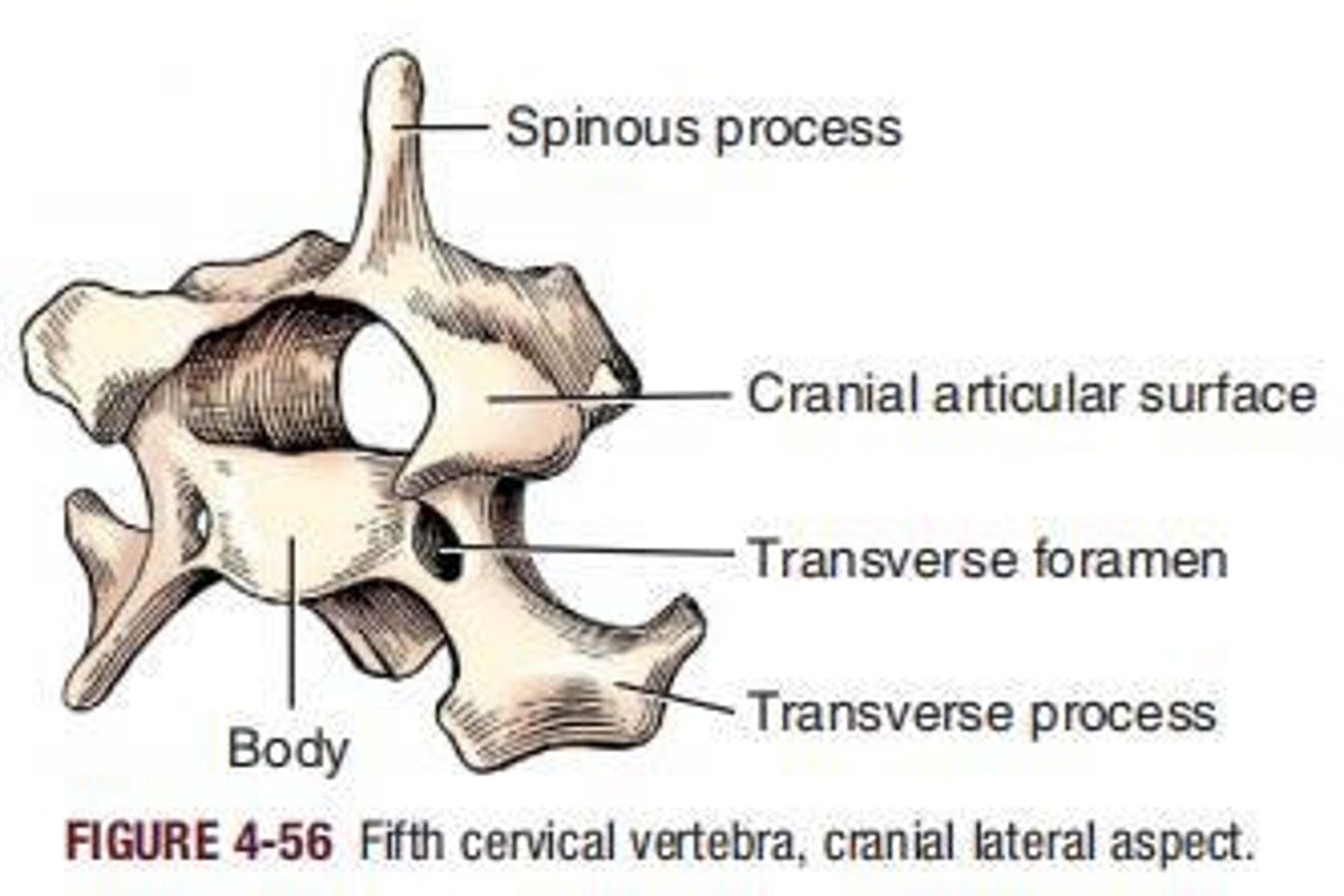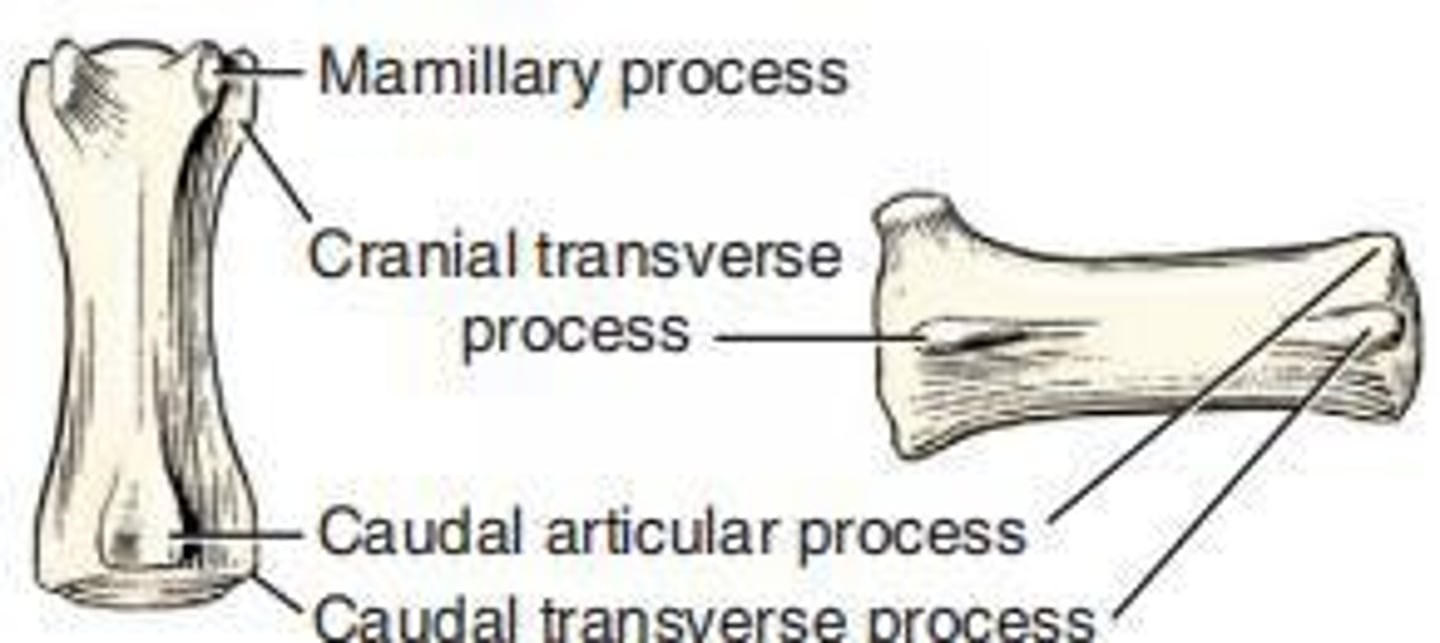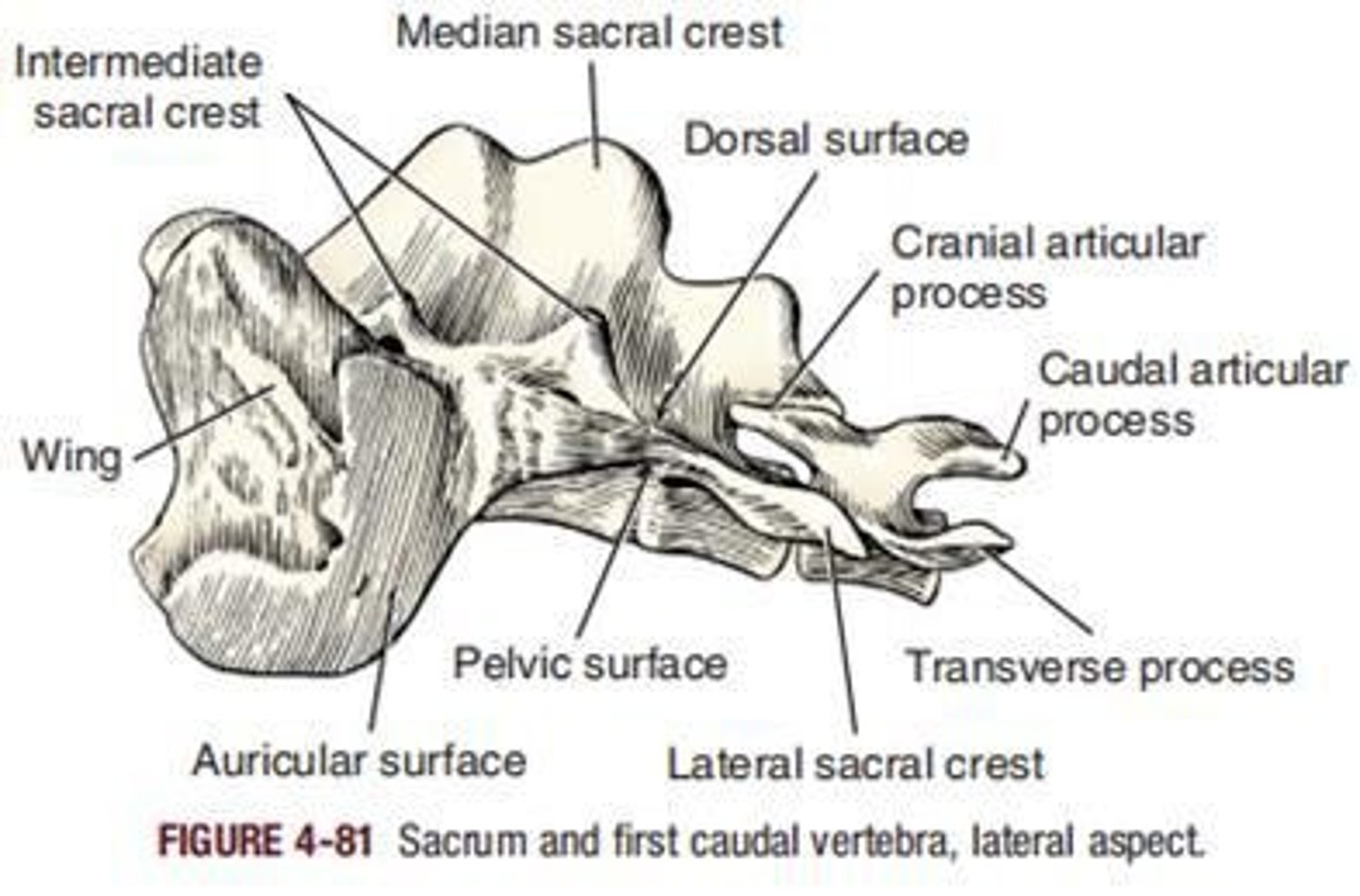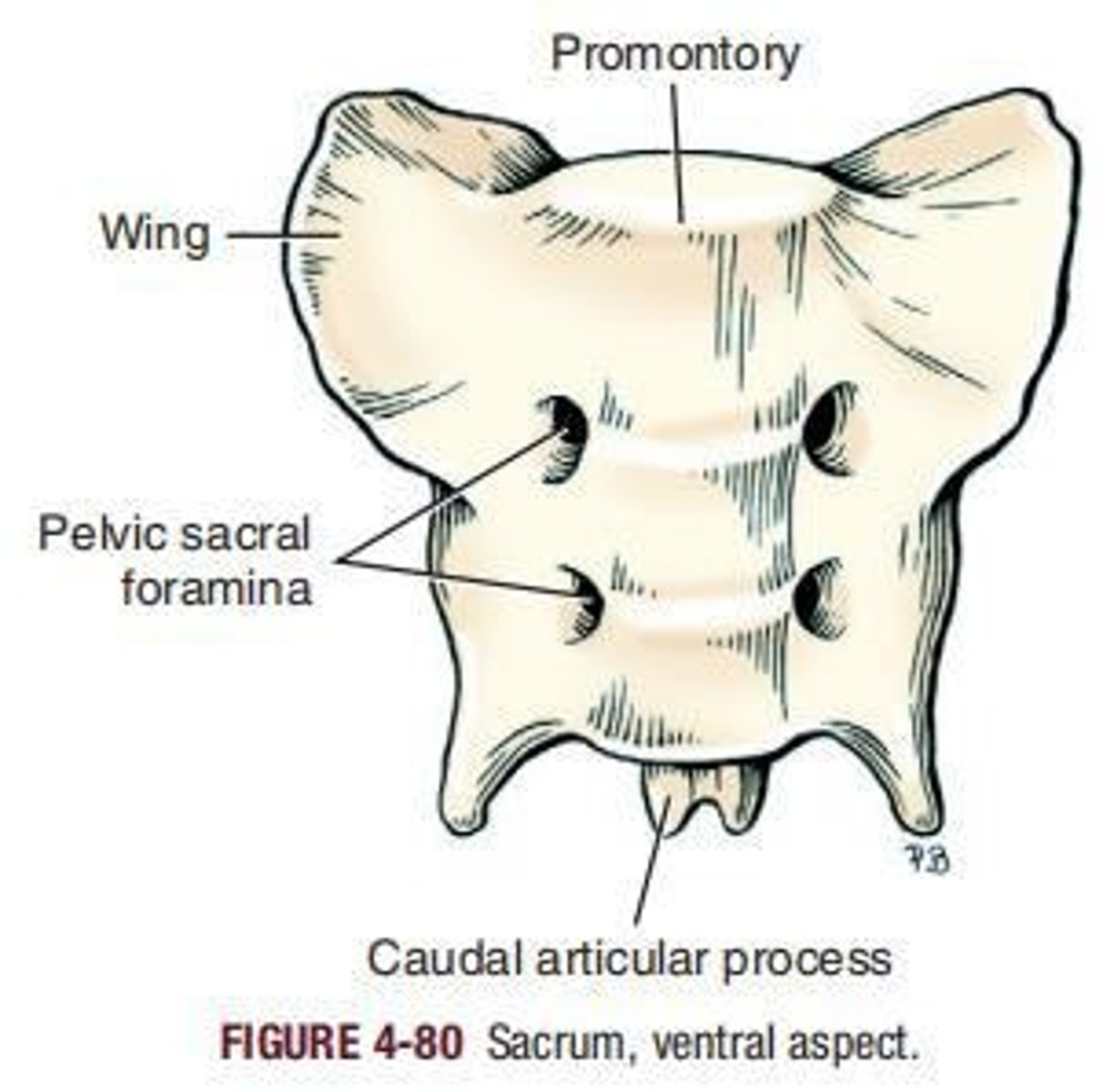Veterinary Anatomy: The Vertebral Column
1/60
There's no tags or description
Looks like no tags are added yet.
Name | Mastery | Learn | Test | Matching | Spaced |
|---|
No study sessions yet.
61 Terms
Vertebral Column
Composed of approximately 50 irregular vertebrae.
Cervical Vertebrae
Seven vertebrae in most mammals, unique structures.
Atlas
First cervical vertebra, articulates with skull.

Axis
Second cervical vertebra, features dens process.

Third Cervical Vertebra
Spinous process length increases from third to fifth.
Fourth Cervical Vertebra
Similar to third, with slight structural differences.
Fifth Cervical Vertebra
Longest spinous process among cervical vertebrae.

Sixth Cervical Vertebra
Higher spinous process, unique transverse processes.
Seventh Cervical Vertebra
Lacks transverse foramina, highest spinous process.

Thoracic Vertebrae
Thirteen vertebrae, shorter bodies than cervical or lumbar.
Cervical Ribs
Articulate with seventh cervical vertebra's transverse processes.

Dens
Peglike eminence on the axis, also called odontoid.

Spinous Process
Projection from vertebrae, varies in length.
Transverse Processes
Lateral extensions of vertebrae, vary in structure.
Laminae
Part of vertebrae, size decreases in cervical series.
Costal Foveae
Articulation points for true ribs on vertebrae.
Caudal Articular Processes
Features on vertebrae, decrease in prominence.
Ventral Arch
Structure of the atlas, supports skull.
Irregular Bones
Type of bone comprising the vertebral column.
Articular Surfaces
Contact points where vertebrae connect.
Cranial and Caudal
Directional terms indicating head and tail ends.
Costal Fovea
Cranial and caudal depressions for rib articulation.
Foveae Costales Transversales
Articulating surfaces on transverse processes.
Mamillary Processes
Paired projections starting from second thoracic vertebra.
Accessory Processes
Developed in midthoracic region, absent in lumbar 5-6.
Articular Processes
Located at junctions of pedicles and laminae.
Spinous Processes
Highest and most massive in midlumbar region.
Transverse Processes (Lumbar)
Directed cranially and ventrally, longest in midlumbar.
Accessory Processes (Lumbar)
Well developed on first three lumbar vertebrae.
Articular Processes (Lumbar)
Lie in sagittal planes, restrict lateral flexion.
Sacral Vertebrae
Three vertebrae fuse to form the sacrum.
Sacrum
Wedge-shaped bone between ilia, articulates with them.

Body of Thoracic Vertebrae
Possesses costal foveae for rib attachment.
Size Variation (Thoracic)
Foveae decrease in size from first to last.
Body of Lumbar Vertebrae
Longer than thoracic, increases in width.
Length of Lumbar Vertebrae
Seventh lumbar matches first in length.
Cranial Inclination
Spinous processes have slight cranial tilt.
Palpable Transverse Processes
Broad extremities felt in emaciated animals.
Caudal Vertebral Notches
Overlapped by accessory processes in lumbar region.
Sagittal Plane Orientation
Lumbar articular processes restrict lateral movement.
First Sacral Segment
Larger than combined bodies of other segments.
Median Sacral Crest
Fusion of three spinous processes.
Apex Ossis Sacri
Broad caudal extremity articulating with first caudal vertebra.
Dorsal Sacral Foramina
Transmits dorsal sacral spinal nerves and vessels.
Intermediate Sacral Crest
Formed by processes and connecting ridges.
Cranial Articular Processes
Large processes forming joints with seventh lumbar vertebra.
Pelvic Surface of Sacrum
Variable concavity of sacral surface.
Wing of Sacrum
Enlarged lateral part with auricular surface.

Auricular Surface
Articulates with the ilium.

Lateral Sacral Crest
Thin crest terminating in a pointed process.
Caudolateral Angle
Flattened pointed process at the end of lateral crest.
Base of Sacrum
Cranially facing part of the sacrum.
Sacral Canal
Wide canal formed by fused vertebral foramina.
Pelvic Sacral Foramina
Larger foramina located lateral to fused bodies.
Promontory
Transverse ridge on the base of the sacrum.

Caudal Vertebrae
Typically 20 vertebrae, varying from 6 to 23.
Body of First Caudal Vertebra
Equal width and length, first in series.
Length Variation in Caudal Vertebrae
Segments lengthen then shorten towards the tail.
Cranial Articular Processes in Caudal Vertebrae
Present but non-functional in caudal vertebrae.
Mamillary Process
Process present until articular function disappears.
Hemal Arches
Separate bones articulating with caudal vertebrae.